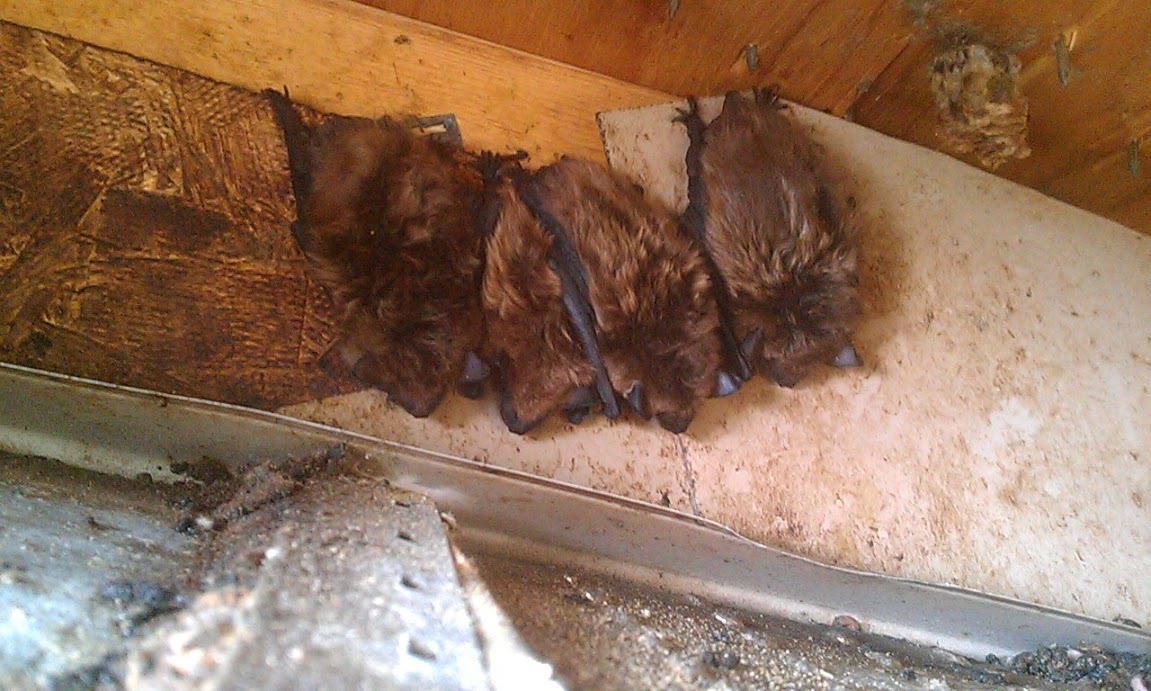Bats are fascinating creatures. They are the only flying mammal. They love to keep their friends and family close, so they roost in groups. They are a welcome sight in summer, every night eating up to 1,000 insects, such as mosquitoes, moths, midges, beetles, mayflies and other flying insects. While it is common to see these animals emerge in the evening during warmer weather, you might wonder what happens to them in winter.
How Are Brown Bats Different?
The little brown bat is one of 19 species that reside in Canada year-round and is the most widespread. Bats in Canada range in size from about 4 grams up to 30 grams, with the little brown bat weighing in at approximately 9 grams. Of all the species, this one is most commonly found roosting near humans. While many bat species in Canada migrate like birds to warmer climates in the winter, the little brown bat does not.
They have an extremely long lifespan for such a small mammal, typically living for up to 34 years. Though raccoons, hawks, owls, and snakes prey on them, one of the biggest threats to these tiny animals is a deadly fungus with no known cure that causes a disease called white-nose syndrome. It can grow in dark, moist areas like caves, even if no bats are present. The fungus can infect them while they hibernate, presenting as a white, almost fuzzy growth on their nose.
What Is Their Normal Behaviour?
Bats are not blind, contrary to the common misconception. In fact, the little brown bat has excellent eyesight. It not only depends on echolocation, the ability to locate objects based on the sound that bounces back from it but also uses visual cues. These animals mate at just over a year old and, no matter when the mating occurs, the female can store the sperm until the spring so that they give birth in the summer to provide the offspring with the best chance for survival. The pups can fly at only three weeks old.
In the summer, little brown bats find roosts for maternity colonies. These may be in bat boxes, under bridges or even inside of hollow trees. However, what is appropriate for dark naps during the day will not protect them during the winter, as they are true hibernators. That means that while a bat appears to be sleeping, its heart rate, breathing and metabolism has been slowed to survive the bitter cold and lack of food during the winter.
Though they don’t migrate, this species will travel up to 1,000 km to find a suitable hibernaculum or winter roost. The ideal hibernacula consistently maintain a temperature above freezing and have high humidity. Bats favour wintering in caves and abandoned mines where they are protected and unlikely to be awakened from their hibernating state, although they can also make their way into the attics and walls of buildings.
Sometimes bats can be prematurely roused from their winter slumber by erratic temperature swings. If that happens, they may start to get active in their search for food and move from your attic and walls into the living area of your home. While they are not dangerous to humans, they can bite if threatened or cornered.
How Can I Remove Bats From My Attic?
The best time to remove bats is in late summer before they begin to hibernate or early spring when they emerge. If a bat is awakened during harsh winter weather with no food to be found, it can be a death sentence for the animal. Don’t try to attempt to rid your home of bats yourself. For Ajax bat removal, call Skedaddle Wildlife Removal. We are approved by humane societies and SPCAs, employing only safe and humane techniques to capture and relocate wildlife. For more information, contact us today.




